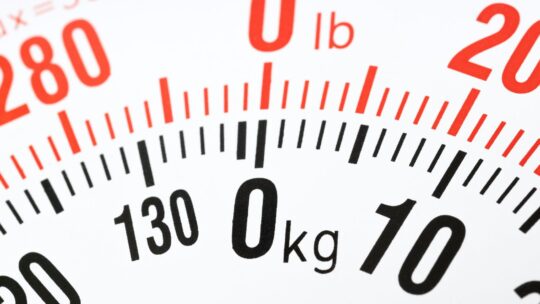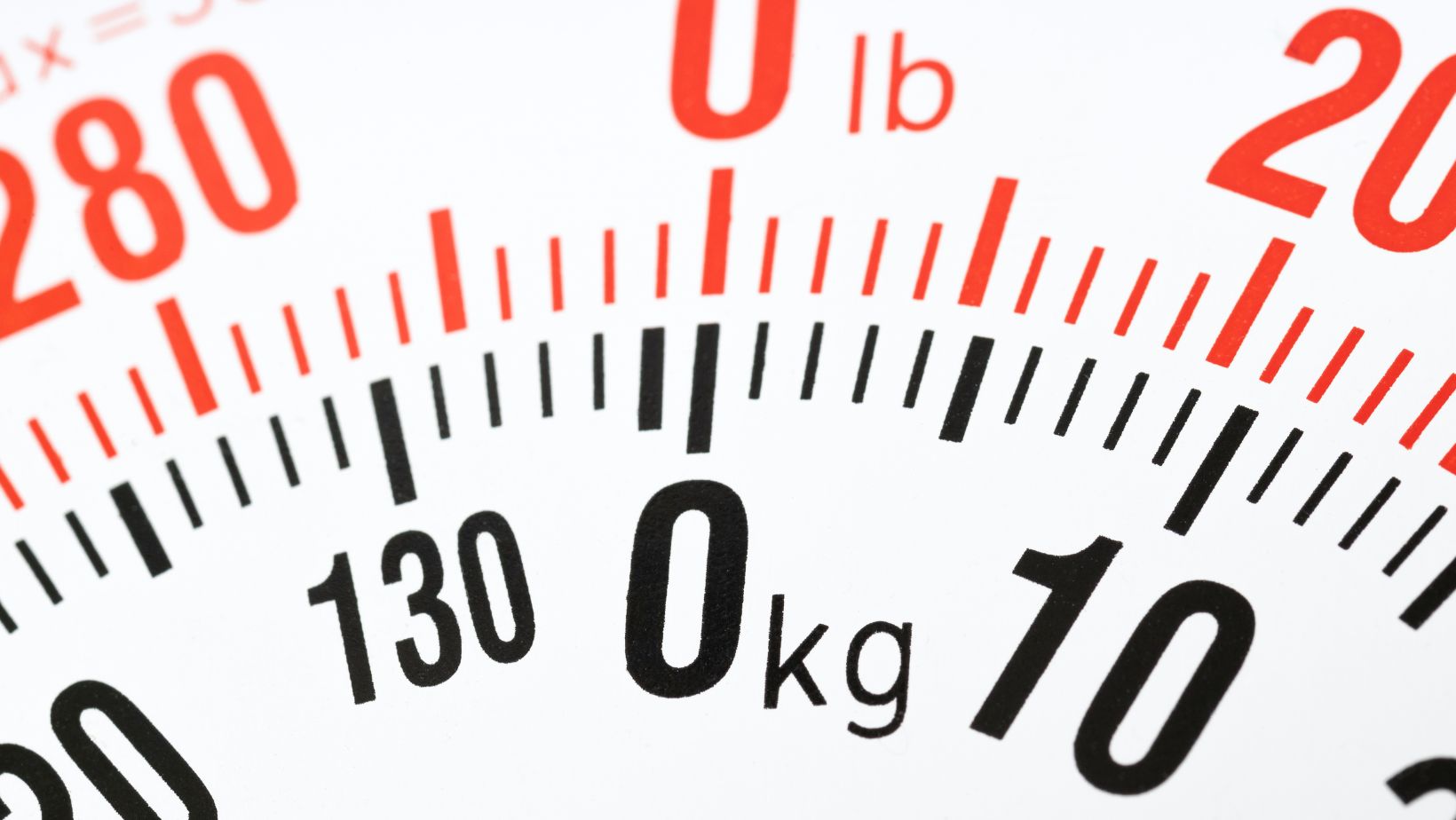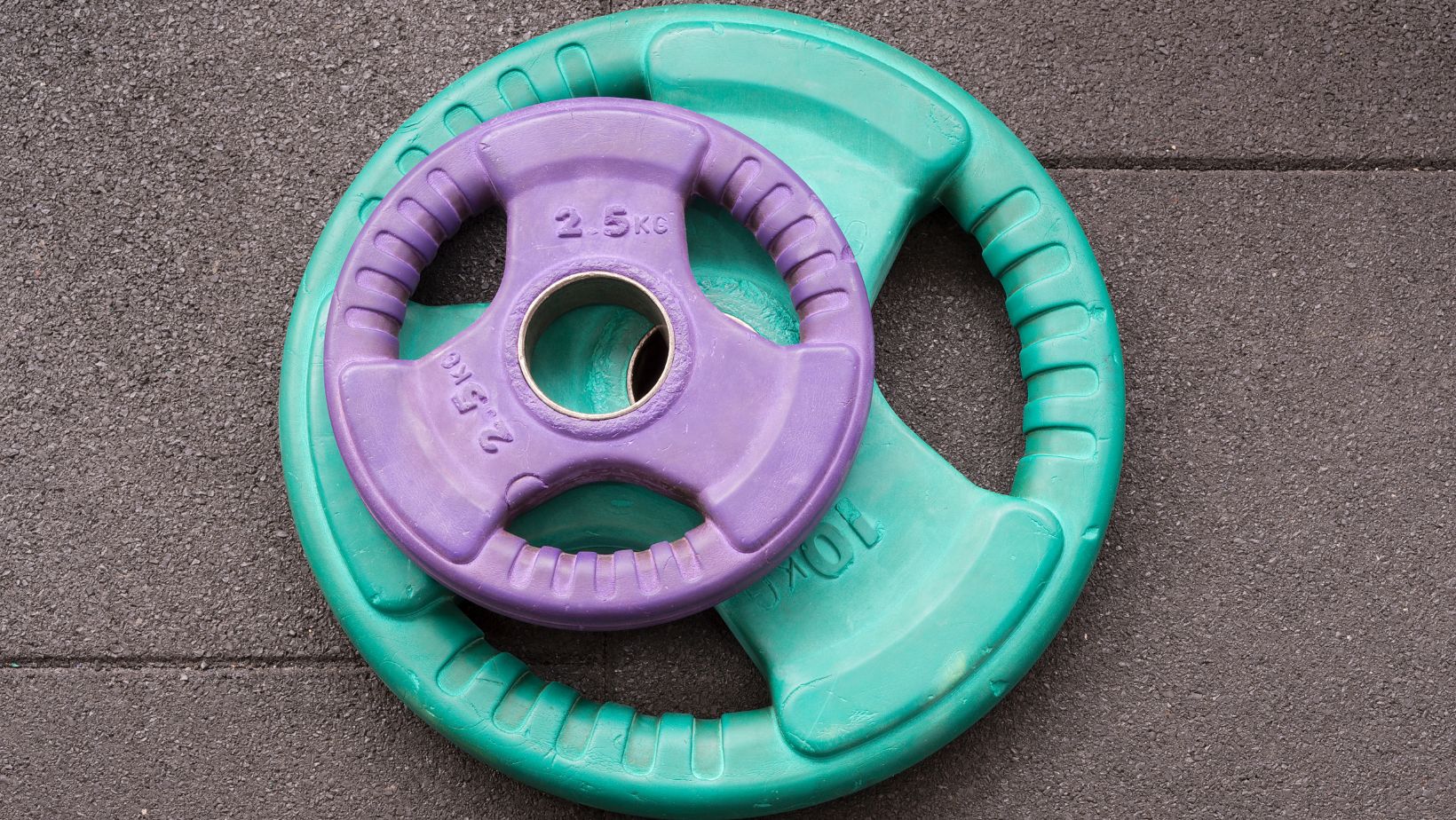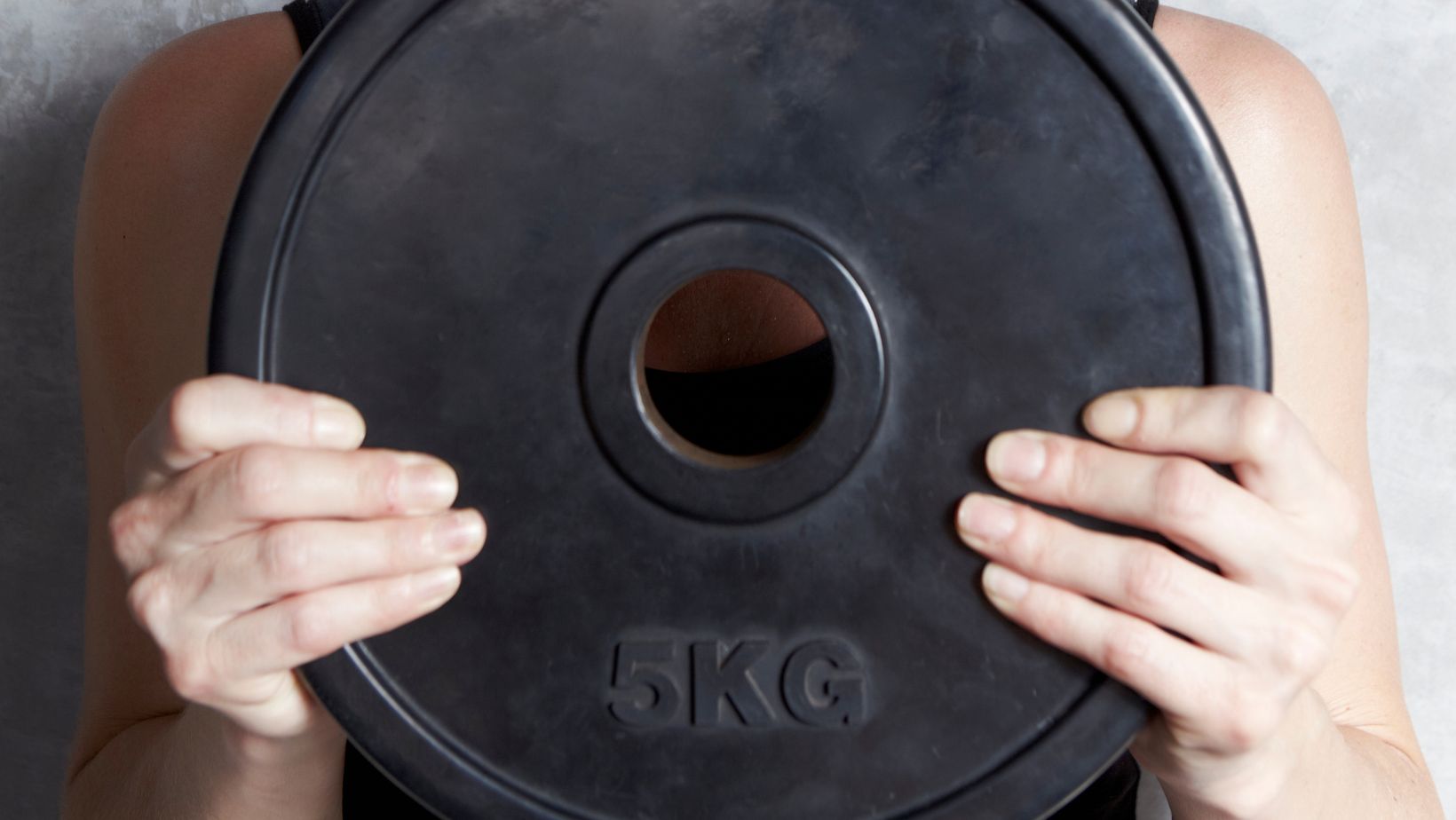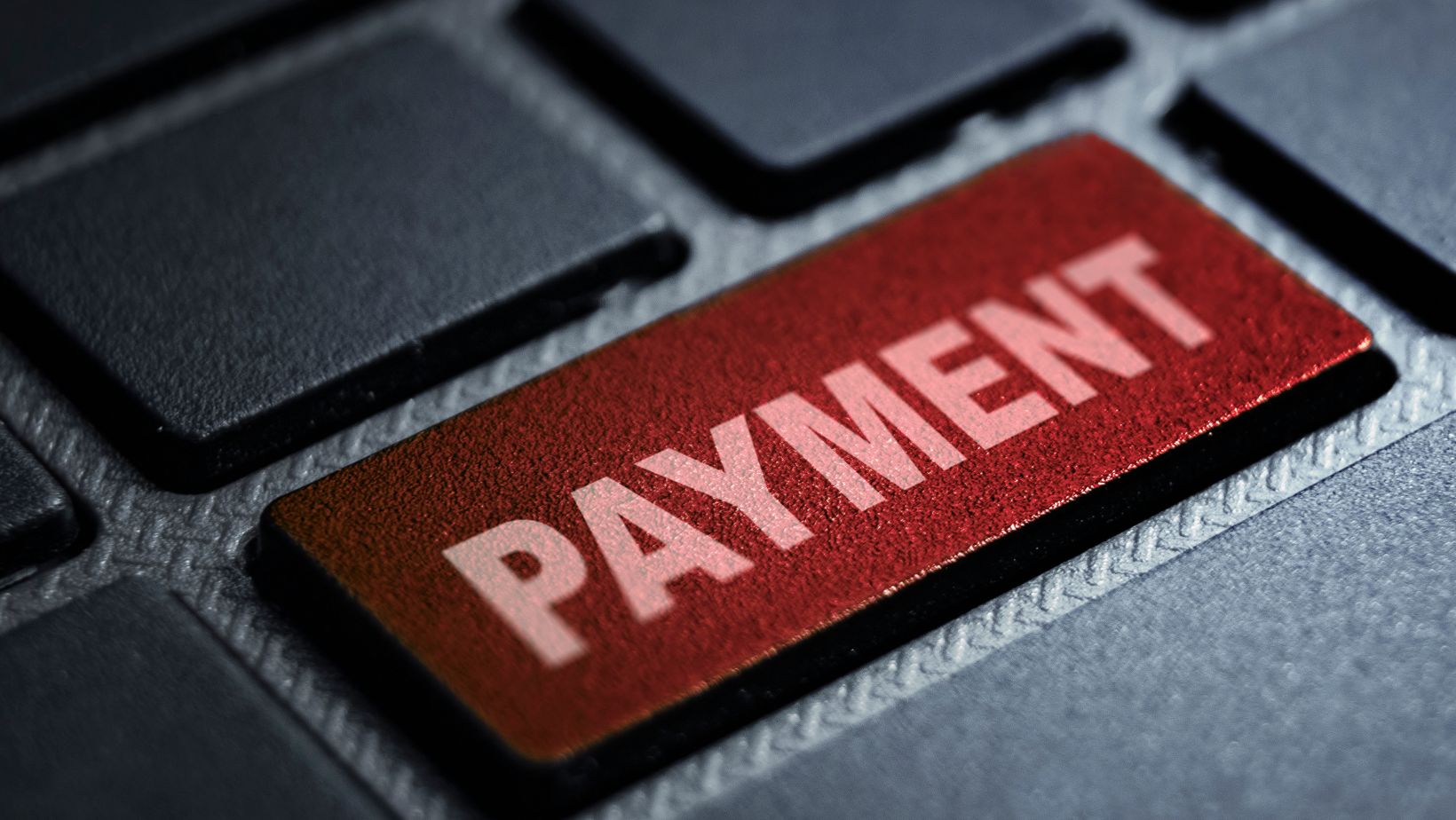
Are you underpaid for the hours you put in your job? You want to know the value of your labour? This article will help you determine the exact worth of your working hours by providing a step-by-step guide on how to calculate your hourly rate.
Make sure to read till the last line to understand precisely what your hard work is worth!
Hourly rate
The hourly rate is the amount of money a person receives for working one hour of work. It may also refer to the total number of hours worked in an average week divided by their total pay. This calculation does not include additional benefits such as holiday, vacation, or overtime pay. An employee’s hourly rate can vary depending on the type of job they are performing, their experience level, and other factors.
For example, a minimum wage worker will typically have a lower hourly rate than a skilled professional such as an engineer. Other factors that can impact an employee’s hourly rate include the local laws and regulations related to minimum wage levels and overtime pay, company policies on salaries and bonuses, union contracts that may govern the compensation of certain jobs or classes of employees, or even special salary structures created to attract or retain top talent.
On some jobs, hourly rate varies based on the performance and efficiency. For instance, Amazon delivery drivers usually make between $15 to $20 per hour. However, the drivers that use apps like MyFlexBot can earn double the amount since they can grab the delivery blocks more quickly than their colleagues.
Employers must ensure they are paying employees accurately based on their agreement with them. Employers must also make sure employees are being correctly classified as exempt versus non-exempt in order to effectively manage payroll costs and comply with wage laws.
Convert salary to hourly
For many full-time employees, wages are expressed in an annual salary. If you want to convert this number into an hourly rate, the calculation is straightforward. To determine your hourly wage, simply divide your salary by the number of hours you work in a year. However, this does not take into account any tax deductions or other factors that affect how much of your salary you actually receive each year.
When calculating your hourly rate from a salary, it is important to consider things like overtime pay and vacation time that might affect how many hours you actually contribute per week or month. Some jobs also include additional income such as commissions and bonuses, which can increase how much you make over the course of a year and thus affect the calculations for your hourly rate when taking these payments into consideration.
You will also need to factor in federal taxes and any other deductions that may be taken out of each paycheck before arriving at your true hourly rate. Knowing what these deductions are and what they equate in terms of hours worked is essential when attempting to calculate accurate figures for your salary to hourly rate conversion.
How to calculate hourly rate from salary
Calculating your hourly rate from your salary payment is a simple process. The first step is to Calculate the number of hours you work in a year. This includes actual hours worked and other paid time such as holidays, sick pay, or vacation time.
Next, divide your annual salary by the hours you work in a year to get your hourly rate. This will give you an approximation of how much you are getting paid per hour at your job. It may be less or more than the minimum wage depending on where you live, the type of job and any overtime that is included in your salary agreement.
For workers who receive hourly pay without any additional benefits or bonuses, their hourly rate can be calculated by dividing their gross pay (wages plus any overtime) by the number of hours they worked for that period. This calculation should be done every month or quarter to ensure accuracy since this type of pay can vary from month-to-month.
Finally, if you are receiving tips or bonuses throughout the year, these should also be taken into account when calculating your hourly rate as they can have an effect on how much money you take home each week or month. When factoring in these additional sources of income it’s important to remember that taxes and other deductions will still need to be taken into account so that an accurate picture is obtained of what you’re actually taking home after taxes and other deductions are applied to your paycheck each period.

Hourly payroll calculator
Hourly payroll calculations involve a range of variables, including hours worked, pay rate, and withholding taxes. Knowing how much you make per hour is essential to planning your budget and understanding how much money you earn each week or month. To help you estimate your hourly wages accurately, we’ve developed an easy-to-follow hourly payroll calculator.
The calculator will calculate the number of hours worked and convert those hours into the actual amount that should be paid for the pay period. It also factors in any overtime rates for employees working more than 40 hours a week and any applicable state or federal taxes that need to be subtracted from the total earnings.
Once the total payroll has been calculated, our calculator can provide an itemized breakdown of deductions and taxes so you can clearly see what amounts are being taken out of each paycheck. You’ll also see a summary of your overall payments that includes net income after taxes along with any applicable deductions or benefits. With this information at your fingertips, you can make decisions about budgeting, savings goals, and more with confidence that your income was accurately calculated.
Calculate hourly rate from salary
Calculating your hourly rate from an annual salary is an important first step to determine the amount you are paid per hour. Your pieces of information regarding your pay, such as your salary details, should be included in your job contract or other pay documents received from your employer.
There are two key factors when calculating how much you are paid per hour: the number of hours that you work each week and the amount of annual salary listed in your employment contract. First, divide the annual salary by 52 for a weekly rate estimate. Then multiply that weekly rate by the number of hours worked each week. The result is your gross hourly wage before taxes and any deductions by employers for payroll taxes or benefits programs.
For instance, if you have an annual salary of $36,000 and you work 40 hours a week then divide 36,000 (annual salary) by 52 (number of weeks in year) to get $692 per week. Multiply this weekly rate by 40 (number of hours worked in a week) to get $27 680 annually which translates to an hourly wage of $17.30 before deductions.
Knowing how much you make per hour lets you better budget and plan financially, as well as negotiate with potential employers if necessary when it comes time for a raise or new job offer. Its also helpful when applying for loans or other types of credit, looking at ways to invest extra income or managing finances during times Unemployment Insurance payments might be necessary during periods where employment is scarce.
How to calculate salary to hourly
If you are paid a salary, figuring out the equivalent hourly rate for your wage can be helpful for budgeting, evaluating job offers, or just seeing how you measure up. Knowing how to calculate this information can give you an accurate representation of how much money you’re making every hour and help you adjust your budget accordingly.
To calculate your salary to hourly rate, first take your annual salary and divide it by the number of hours you work in a year. To get the most accurate calculation, use the exact number of hours worked rather than estimating or relying on a standard 40-hour workweek. If the number of hours per day varies, or if there are days missed due to vacation time or illness, make sure to include those in your calculation as well. This will result in a per hour figure that works out exactly what percentage of your salary goes toward each hour of work.
Generally speaking, salaried positions pay more per hour than those calculated using an hourly rate due to additional benefits such as paid holidays and overtime pay based on hours worked over 40 in a week (if required). If you’re considering taking on a salaried position with different benefits than an hourly rate job might offer—such as more healthcare coverage—it’s important to weigh all aspects before committing yourself. Calculating its true hourly equivalent can help ensure that the job is worth it financially as well as professionally.

Yearly to hourly
Converting a yearly salary to an hourly rate can be done by first determining the total number of hours worked per year. Many full-time employees work 40 hours per week, or 2,080 hours per year. Divide the salary by this number to calculate an hourly rate. For example, if your yearly salary is $50,000, divide 50,000 by 2,080 to get an hourly rate of $24.04.
However, not all jobs consist of a set 40 hour workweek — there are also shifts with more or fewer than 40 weekly hours and seasonal positions that may bring in higher wages for fewer work weeks during the year. If you have those types of arrangements for your job you’ll need to consider how many extra or fewer hours you can expect throughout the year before making your calculations.
In addition to your base salary you’ll also want to include any extra payments and premiums in your calculations such as overtime pay or shift differentials. Depending on where you live and what type of job you have these gains may increase your overall wage package significantly so do make sure they are included in your total calculations before comparing one offer against another!
Calculate hourly wage from salary
If you are paid a salary and not an hourly wage, you may be wondering how to calculate your own hourly wage. Depending on your type of salary structure and compensation plan, it can be simple or slightly more complex. Here are some key steps to help you determine your hourly wage from a salary:
1) Calculate the number of hours you work in one year by taking the number of hours you work each week and multiplying it by the number of weeks in the year. Most employers use the 52-week-per-year standard; however, if there are 53 weeks in a year or if you are working extra hours, make sure to take that into account.
2) Divide your annual salary by total number of hours worked as calculated in Step 1. This will result in an estimated rate per hour for one year with no overtime or bonuses considered.
3) Adjust your rate per hour depending on overtime or bonuses received over a given period. For example, if overtime pay was 3 times your base rate for one month, then adjust upward accordingly for that time period only to include those three times the wages earned from overtime pay into the total amount earned for that month divided by total hours worked for more accurate wages paid per hour during that time period.
4) If relevant, consider any additional pay from commissions, shift differentials and profit sharing when calculating your hourly rate. If these items apply to your income structure, add this pay accordingly based on specific percentages as included per corresponding agreement for more accurate wages paid per hour during certain time periods.
Monthly salary to hourly calculator
Figuring out how much an employee is paid per hour can be a tricky process depending on the structure of their compensation plan. While some compensation plans are hourly, many are based solely on salaried positions. If you work for a salaried employer, then the amount that you’re paid per hour may vary substantially from week to week or month to month depending on how the workload is distributed in any given period. To accurately determine your exact earnings per hour, it’s important to use a monthly salary to hourly wage calculator.
Using such a tool allows employers and employees alike to determine the exact wage or salary for an individual not only on a weekly basis but also in hourly terms based upon the average hours worked during a given month. Making use of this calculator can help employers ensure that they’re offering a competitive wage while allowing them to budget more accurately when factoring in benefits since payroll expenses are typically classified as being either direct or indirect labor costs.
Employees benefit by getting an accurate understanding of their true earning potential since salaries are not always calculated in proportion to hours worked and overtime can sometimes have a variable impact on paychecks due to any additional bonuses or incentives earned over and above base salary payments. Furthermore, having an up-to-date value on your estimated hourly rate can help individuals who are job searching narrow down specific jobs that pay close attention to wages alongside other job criteria like location or type of work being offered.

Salary to hourly rate calculator
Salary to hourly rate calculator is a useful tool to help employees, employers and job seekers quickly convert an annual salary into an equivalent hourly rate. It can be used for calculating net pay, overtime pay and/or total time spent working for time-based compensation. To calculate your salary to hourly rate, simply input the required information and the calculator will automatically generate results.
The calculator helps determine an employee’s hourly rate of pay by using gross annual salary or the monthly salary as the input. It includes options such as considering tax deductions or not, taking into account minimum wage laws, and multiplying timesheet hours worked with a given multiplier if necessary. The end product of this calculation is an hourly rate which can then be applied to a physical or virtual timesheet.
This calculation takes into account important factors such as taxes, accounting for payroll deductions (such as FICA taxes) in order to compare apples-to-apples across different locations and payroll periods. Ultimately, it is important to remember that your fundamental value as an employee comes from much more than your paycheck; the value of mentorship, work experience on the job, building relationships with colleagues and customers are also important factors when evaluating salary offers.
Salary per hour calculator
The amount you are paid per hour is an important factor that can affect your quality of life, especially where employment requires a minimum hourly wage. Calculating the actual amount of money you are earning per hour is not as simple as it may seem, however, because a variety of factors influence the hourly salary rate for different workers. Knowing and understanding these factors can help ensure that you’re making accurate calculations to determine your precise pay rate.
To calculate your salary per hour, use this formula: Hourly Wage (w) = Annual Salary (Y) / Hours Worked Per Year (h). For example, if you make an annual salary of $48,000 and work 40 hours per week with two weeks vacation: $48,000 (Y) / 2080 hours (h) = $23.07 per hour ($48,000/52 weeks * 40 hrs/wk = 2080 hrs).
Different workers may have different salary rates due to some other factors such as overtime hours, incentives/bonuses or commissions earned from sales. These additions to the fixed hourly wage must be factored into the calculation for more accuracy. To get a more accurate value for your hourly remuneration rate: To calculate overtime rate adjustments use this formula – Overtime Pay Rate (OPR): OPR = [(Hourly Wage x Overtime Multiplier x Hours Worked)] + Base Pay Rate; Incentive Rates adjustments use this formula – Incentive Pay Rate (IPR): IPR= [(Hourly Wage x Bonus Incentive] + Base Pay Rate; Commissions adjustments use this formula – Commission Pay Rate (CPR): CPR = [(Bonus Commission Post Sale X Unit Sales] + Base Pay Rate; Any tips or other payments also need to be accounted for and incorporated into the overall salary calculation accurately.
By taking all these additional factors into account and inputting them into a salary calculator that performs respective calculations including any tax deductions applicable in your region, you will receive an accurate figure adding up to your total remuneration on an hourly basis. Once you know the exact amount of money you are receiving per hour at work it should make budgeting easier and help out economically over time!
Salary to hourly wage calculator
In many cases, it is necessary to convert salary to an hourly wage in order to accurately compare different jobs and determine the worth of a given position. The salary to hourly wage calculator takes into account a number of variables when making this conversion, including total hours worked per year, overtime wages and any bonuses that may apply.
The base hourly rate is calculated by dividing the yearly salary by the total number of hours worked in the year, before factoring in overtime or bonuses. Generally speaking, most full-time employees work around 2,080 hours per year (40 hours x 52 weeks), but this varies slightly depending on the organization.
Overtime wages are typically paid at 1.5 or double an individual’s base hourly rate for any hours worked above eight or 40 for the week depending on your organization’s policy. Additionally, many organizations offer end-of-year bonuses and other incentives, which should also be factored into your salary/hourly wage calculation when comparing different jobs and positions.
Pay per hour calculator
Knowing your hourly rate is vital to understanding how much you are being paid and how to budget. Every job has a different hourly rate, based on the position and applicable local or national minimum wage requirements. The pay per hour calculator allows you to determine your own earning potential taking into account all the relevant factors such as promotions, vacation time and overtime for both salaried and hourly employees.
The pay per hour calculator makes use of information such as total hours worked per week, gross pay over a given month, specific deductions from your salary/wage (such as taxes, insurance premiums or partnership retirement contributions) and any applicable bonuses or tips. Knowing this information will help you determine your exact earnings and figure out if you have been paid accurately according to the local laws or industry standards.
This calculator is an ideal tool for small business owners looking for an easy way to distinguish how much their individual employees are making per hour so they can adjust payrolls accordingly. With a few clicks of the mouse, it can also be used by salaried employees interested in calculating their ‘take home’ pay after all deductions are taken into account. Knowing this number will help you budget responsibly while also helping ensure compliance with appropriate labor regulations such as those set out by the Fair Labor Standards Act (FLSA).

Omni salary calculator
Determining how much you should be paid for each hour of work can be tricky, as wages vary depending on the company, industry, and location. For example, an employee in London may earn a higher wage than one in Leeds. To help workers figure out their ideal salary rate, many companies are now using an Omni salary calculator.
An Omni salary calculator utilizes advanced data analysis technology to calculate an hourly wage based on factors such as hours worked per week, required qualifications, and location. The calculator can provide accurate estimates with just a few clicks of the mouse; all you need to do is enter your basic information such as experience level and job title. An Omni salary calculator can also take into account other unique workplace conditions such as shift patterns and working schedule availability.
By providing employees with an estimate of what they ought to be earning based on their individual circumstances, an Omni salary calculator offers more confidence to job seekers when it comes to negotiating salaries or countering offers from new employers. It also provides employers easy access to industry benchmarks which helps them determine appropriate wage rates for their own workforce as part of their recruitment process.
Hour pay calculator
Calculating your hourly pay rate can be tricky, as it takes into account all of the factors that go into calculating how much you are paid per hour. These include your base salary, any bonus payments or commissions you receive, and any taxes or deduction that come out of your paycheck. An easy way to calculate your hourly rate is by using an hour pay calculator.
An hour pay calculator is a tool that allows you to enter information about your salary and other income sources and then calculates how much money you are paid per hour. These calculators usually require information such as your annual salary, wages from other jobs, commissions or bonuses, as well as deductions like Social Security tax, Medicare tax and union dues. Once the calculator has all of this information entered in it can tell you exactly how much you make each hour.
This will help you determine what kind of wage gap exists between yourself and those who are similarly employed in other locations or industries. It is also helpful for budgeting purposes so that you know what kind of money to expect from each paycheck. Knowing exactly how much per hour makes budgeting easier because it gives you concrete figures to work with rather than just an estimate.
How much do i get paid an hour
Your hourly rate is an important part of your total compensation package and it can vary depending on several factors. Your employer will usually use a combination of your work experience, skills, location and industry to determine an appropriate rate of pay. The federal minimum wage and state or local laws may also play a part in determining your specific pay rate. Additionally, different organizations may have internal policies regarding base wages and salary structure. With this in mind, it is important to understand all components of your compensation package before you accept a job offer or negotiate the terms of employment.
Talk to the Human Resource or Talent Acquisition representative at the company where you are interviewing with or employed at to get an understanding of what they consider to be fair payment for the specific job role. Most employers provide detailed information about how they determine salaries and wages, so make sure to ask any questions you have prior to accepting a job offer or negotiating your salary. Be prepared with any supporting documents that demonstrate the relevant skills and experience you bring to the role, as this can help them make an informed decision about your pay rate. Your job performance can also influence changes in your total compensation over time.
Omni calculator salary
The Omni Calculator salary calculator is a convenient tool that helps you understand how much you are paid per hour by indicating your annual salary. Simply provide your gross annual salary, including any bonus payments, and the calculator will generate the associated hourly wage.
The calculations are based on corresponding tax rates that are specific to your local jurisdiction. The results will show the calculated hourly wage after deducting all of the relevant taxes and compulsory contributions paid from your gross salary by law. Additionally, you can adjust for any additional salaries (e.g., stock option grants) or deductions (e.g., travel expenses) to have a more precise calculation tailored to your individual situation.
Using the Omni Calculator “Salary Per Hour” tool is an easy reference for individuals who wish to determine their exact take-home pay for any given period of time. The results give an accurate picture of what one’s true earning potential is during their full-time employment contract with a company or organization, leaving no stone unturned in terms of legal compliance and fiscal responsibility under applicable laws and regulations. This also eliminates any doubts concerning one’s total remuneration when it comes to negotiating salaries with employers or engaging in other financial transactions such as loans, investments, etc.
Hourly calculator salary
Determining your hourly salary rate is an important step in understanding your earnings and ensuring that you are making a fair wage. An hourly calculator salary can be used to calculate your hourly pay based on the number of hours worked, the wages earned, and any deductions that have been taken out of your pay. The calculation allows you to gain clarity into how much you are actually making per hour and ensure that it is in line with industry standards or market rate for certain professions.
Though some employer may choose to pay their employees a fixed rate for each job completed within an allotted time frame, most employers typically decide to put their employees on an hourly calculator salary system. This means that your rate of pay is calculated based on the hours actually worked. This information can be found on your paycheck stub or monthly paycheck statement. If a deduction has been taken out, such as taxes or Social Security, it will show up as either a percentage or fixed dollar amount per hour worked.
In some cases, there are special bonuses or overtime rates added to an hourly calculator salary to make up for discrepancy in wages received when working outside of their normal scheduled hours. Depending on the type of profession, these extra compensation bonuses can range from 4-30% more than what was previously predetermined for standard hour rates for salaried employees. It is important to understand these additional factors when determining how much you are being paid per hour so that can better plan and manage your budget accordingly with accuracy and fairness from potential employers.
Monthly to hourly
Converting your salary from a yearly amount to an hourly wage can be helpful when budgeting and comparing different jobs. This can also be useful for planning for taxes or when trying to determine the amount of overtime you are entitled to. To figure out how much you are paid per hour, multiply your monthly salary by 12 and then divide this number by 52 weeks in the year. This will provide an estimated amount that you would earn in a year as an hourly wage which you can use to compare benefits and job packages.
It is important however, to check with your employer if possible before making any calculations or estimations regarding pay rate.
Calculate hourly pay from salary
When working out your fixed salary, it can be difficult to work out how much you are paid per hour. Knowing your hourly rate can help you plan your finances and organize your working day more effectively. This guide will explain the process of converting fixed salary into the equivalent hourly rate, so that you can compare job payscales and rates.
The most accurate way of calculating your salary is to divide the amount by the number of hours it represents. To calculate this you need to know two things: how many hours are expected in a month/year and what is your annual salary? For example, say that you have an annual salary of $50,000 and you expect to work 2080 hours (40 hours x 52 weeks) in a year. Then:
Hourly pay = Annual Salary / Hours worked per year
Hourly pay = $50,000 / 2080
Hourly pay = $24 per hour
It’s important to remember that potential bonuses or benefits such as pension contributions will not be taken into consideration when calculating this estimate. It only provides an approximate hourly rate based on base salary alone. Therefore if these options are included then make sure they are also taken into account when making a comparison between different job opportunities or payscales.
Hourly pay calculator salary
Individual earnings can vary considerably due to factors such as the size of a company or industry, location, specialized skills and experience. To get an accurate indication of hourly pay rate based on salary, use an online hourly pay calculator. The resulting data is a gross rate before taxes and other deductions. You can also customize income tax and social security calculations for specific states.
Calculations are easy to complete with just a few simple steps:
1. Select your annual salary
2. Select your state of residence
3. Choose the filing status relevant to you (single person/married etc)
4. Tick boxes on items such as social security and medical deductions
5. Add any overtime or bonus income you may receive
6. Click ‘calculate’
The hourly rate calculator will then provide you with an estimate per hour in gross wages that you should receive after completing those steps.
Salary calculator to hourly
The salary calculator to hourly can provide you with the hourly rate of your current salary. When you enter your total annual salary, it will give you a breakdown of what your annual, monthly and weekly wages are. It will also convert this information into an hourly rate. This hourly rate is the amount you get paid for each hour of work.
Knowing this figure can help you assess raises and make decisions about how much other jobs may provide in terms of pay per hour. By understanding what your takes-home pay means in terms of hours worked, you can better plan for budgeting or savings goals and know how long it will take to become financially independent or reach financial goals.
Yearly to hourly wage calculator us
Often times, it is necessary to convert your annual salary into an equivalent hourly wage in order to compare job offers or opportunities. When determining your hourly wage, you need to consider the amount of overtime you work if you are paid on a salary basis, bonuses, employer contributions and any other forms of compensation you may receive.
For example, if you make $50,000 per year and elect to work 40 hours per week all year long, that works out to a rate of $24.04 per hour ($50,000/2,080 hours = $24.04). However, if you work for an employer who provides benefits such as health insurance and 401(k) contributions that total 10%, the $50K employee would actually have take home pay of $45K annually and the hourly rate would be reduced to approximately $21.63/hour ($45k/2080 hrs).
When converting from yearly wages into an equivalent hourly amount it is important to include any additional benefits or time off that you receive from your employer. By accurately taking into account all forms of compensation when calculating your annual-to-hourly wage conversion rate, you can make sure that any job offer or opportunity accurately reflects the value that is being provided to you over the course of one year.
Converting monthly salary to hourly
If you are paid a fixed monthly salary, it can be difficult to accurately calculate the amount of money you earn per hour. Knowing your hourly rate is important when budgeting and deciding how much to be paid in your job or side hustles. When calculating an hourly rate from a monthly salary, there are some key points to consider that will allow you to arrive at an accurate figure.
Firstly, determine the amount you gross in one month’s pay, before deducting taxes and insurance. Divide this number by the total hours worked in the month, including any overtime hours and holidays taken off. This resulting number will be your hourly rate before taxes are applied from your salary.
Once you have established the untaxed hourly rate, you must factor tax deductions into consideration. Depending on your tax bracket, certain percentages of your income may be withheld for Social Security or Medicare payments and other taxes stipulated by state law or local regulations (i.e property taxes). Subtract all tax deductions from the calculated pre-taxed hourly rate to get an accurate after-tax estimate of what you actually take home per hour of work done during each month.
Monthly hourly calculator
Calculating your monthly wage can be daunting and time-consuming if done manually. Many businesses have hourly rates that are different from week to week, meaning you will need a calculator to accurately calculate your wage in the most efficient way possible.
Using a monthly hourly calculator is an easy way to work out how much you’re being paid per hour and for each of the hours worked in a given period. This is especially useful if you are paid on an hourly basis and have multiple jobs, as it allows you to easily gain insight into how much money you’re earning in total each month.
Monthly hourly calculators can be found online and can help make sure that you are receiving the correct pay without having to manually track every hour worked throughout the month. Simply enter your weekly shift patterns, basic salary rate, salary extras such as bonuses or commissions, any overtime hours you may have worked, and the hourly calculator will give you an accurate sum of exactly how much your pay should be each month.
The monthly hourly calculator can save time by instantly displaying how much money should be coming into your account at the end of each payment period, giving you peace of mind that no details or working hours were missed off in calculations. It also eliminates any errors from incorrect manual calculations saving both yourself and employers time by quickly producing accurate results.
Monthly to hourly calculator
In order to quickly and accurately determine one’s hourly rate of pay, it is important to understand how monthly pay is converted into an hourly wage. This is especially true for those who cannot calculate their hours worked in a given day, week, or month. With a few simple calculations, it’s easy to figure out how much you are paid per hour with an online monthly-to-hourly calculator.
When using the calculator, keep in mind factors such as deductions and overtime in order to get an accurate result. Generally, this information can be obtained from your paycheck stub or boss so that you have all the necessary details for conversion purposes. Additionally, if you use a time tracking app it may include a built-in hourly wage calculator that allows you to track your exact hours worked over the course of a given period.
Once you input all the necessary data into the calculator, simply hit the “calculate” button and voila! You now know exactly how much money your employer pays you per hour for your hard work and dedication. Knowing this number is empowering because you now know for certain exactly what tangible results your labor produces and can make more informed decisions regarding working conditions and other options related to pay scale.
Dollar per hour calculator
Many organizations use hourly rates to calculate employee wages. This rate is typically determined by the type of job held and the jurisdiction it’s based in. Knowing your hourly rate allows put you in a better position to track your wages, set budgets and compare different job opportunities. Determining how much you are paid per hour can be difficult if you do not know the basics of how to calculate hourly rates. To help, here is a guide on how to calculate your dollar per hour:
Step 1: Understand that the dollar per hour calculation is simply your total earnings divided by total number of hours worked. The two components of this equation are important for understanding and calculating this rate.
Step 2: Calculate your gross earnings for a certain period (such as week or month). Gross earnings mean money earned before deductions are taken out, such as taxes or benefits like health insurance premiums paid by an employer on behalf of their employees.
Step 3: Calculate the total number of hours worked during this same period, which can include both regular work time and overtime work time if applicable.
Step 4: Divide your gross earnings by total number of hours worked during that period to obtain a dollar per hour calculation. This will provide insight into your wages for comparison purposes or any general questions related to compensation you have about yourself or other employees in a similar role at that organization.
Dollars per hour calculator
Determining your hourly wage isn’t always easy. Employers calculate hourly wages differently and wages are influenced by different factors, including the type of labor performed, employer’s budget, hours worked and a variety of other factors. To make sure you are paid fair wages, it’s important to know how your hourly wage is calculated.
The best way to calculate your hourly wages is with the use of a dollars per hour calculator. This calculator takes into account all necessary variables such as salary type, hours worked per week and applicable taxes, to give you an accurate determination of what your pay should be for each hour worked. Many employers are now relying on these calculators as a way to accurately determine the rate for their hourly employees.
By using a dollars-per-hour calculator, you can ensure that the amount paid per hour is in accordance with the requirements set by law and industry standards. Further, many companies use this calculator as part of their payroll system to quickly identify which employees may be owed back pay or overpayment for any missed hours or any other discrepancies between what was initially stated in their employment agreement and what was actually paid out by their employer during a certain period of employment.
Calculate dollars per hour
When deciding how much you are going to be paid per hour, there are several factors to consider. It is important to look at the job market, compare salaries and salary levels between different businesses and industries. Once you have gathered all of this information, it’s time to calculate your rate of pay using the following formula: wages divided by number of hours worked.
For example, if you were making $10 an hour and worked eight hours in a day, your hourly wage would be calculated like this: ($10 x 8) / 8 = $10. This would mean that for every hour, you will make $10 dollars.
When determining how much money you should be paid per hour for a particular job or freelance gig, making sure you are receiving fair pay is essential. Online calculator tools can help with the math and determine what each hour should cost from your overall earnings and budget considerations. Visit websites like WageLine or Glassdoor to access reliable salary data that can help optimize what you’re asking for each hour based on industry standards in your area. Negotiate with employers whenever possible so that they understand the value of investing in skilled labor—and so that they know exactly why they should offer competitive rates over general market trends in order to acquire top talent.









